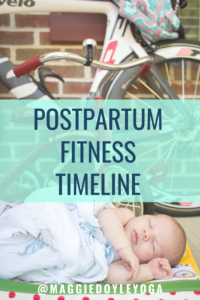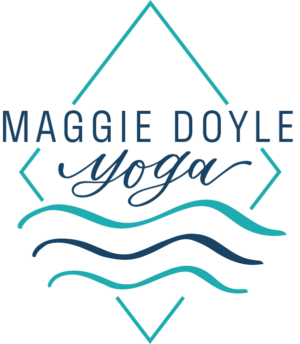
Introducing the Postpartum Fitness Timeline. Returning to fitness postpartum is just like returning to fitness after an injury. Being intentional and deliberate about your movement is extremely paramount.
Postpartum is different for every woman. Every woman, every birth and every healing timeline is and will be different. The general guidelines in the Postpartum Fitness Timeline are here to help guide you.
Through this whole journey I want you to remember that SLOW is FAST.
PLEASE NOTE: Postpartum Fitness is NOT about losing weight. It is about healing your body and rebuilding strength so you can be healthy and get through the marathon that is motherhood.
0-2 Weeks Postpartum: Coregulation
- Bond with baby, do skin to skin, practice laying in.
- Rest.
- Let your body heal.
- Focus on nutrient dense foods that help you heal.
- Schedule an appointment with a chiropractor.
2-6 Weeks Postpartum: Recovery
- Reconnect with your breath and start a daily diaphragmatic breathing practice.
- Gradually add in functional core movements.
- Baby Wearing Walks. Start with short walks and work up to 20 to 40 minutes.
- Postpartum visit and getting clearance to return to workouts by OB/Midwives. Just because you are cleared doesn’t mean you can return to regular fitness classes or training.
- Pelvic Floor Physical Therapy – I highly recommend all women see a PFPT post birth to have their pelvic floor evaluated.
- Check for Diastasis Recti.
- Listen to your body. Cues that you are overdoing can include an increase of bleeding and pain.
6-12 Weeks Postpartum: Rehabilitation
- Deliberate and intentional movement integrated with breath.
- Core and Pelvic Floor rehab with functional movements
- Postpartum Yoga
12 Weeks to 12 Months Postpartum: Rebuilding
- Breath and Functional Progressions are still important and continue to be a part of your fitness routine. They make for great warmups.
- Rebuilding with strength training.
- Slow return to Running.
- It is important to take it slow and listen to your body. The postpartum body is still healing and at risk for injury.
- You still want to avoid crunches, sit ups, extended period of planks, toes to bar, boat pose, upward facing down and other movements that put strain on your diastasis.
Signs that need to reevaluate where you are include incontinence, pelvic pain, bleeding, pelvic instability. If these occur please check in with your OB/Midwife, Chiropractor, Pelvic Floor PT or other Medical Provider.
This is general guidance. Every woman will be on a different timeline. If it takes you more time to heal that is okay. SLOW is Fast. Postpartum is two steps forward and one step back.
Want to learn more or get individual guidance? Schedule a one on one virtual consultant with me.

